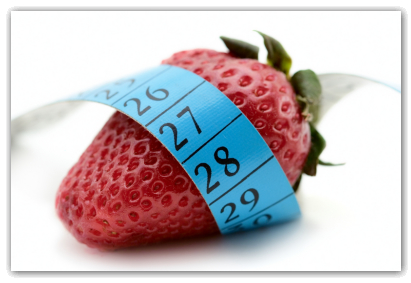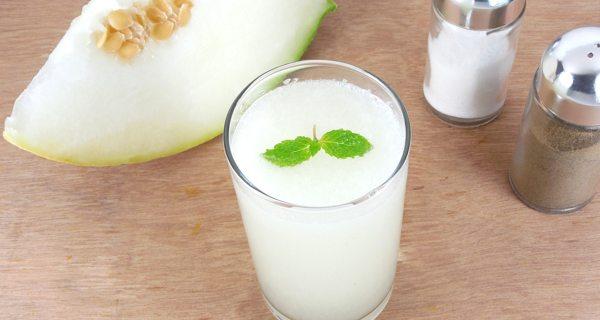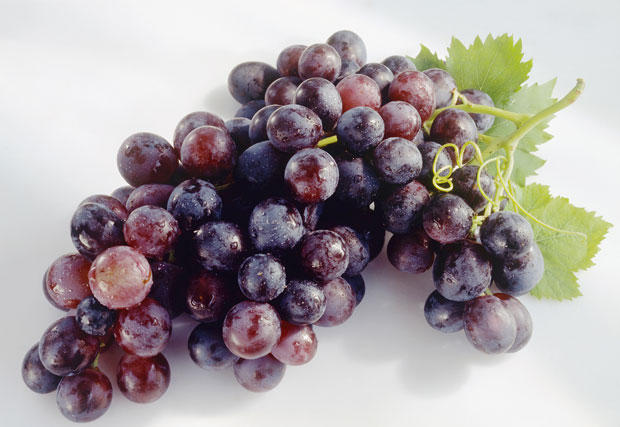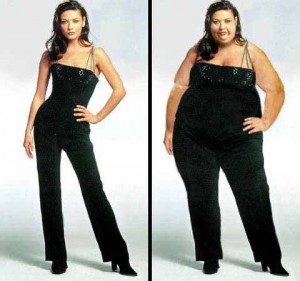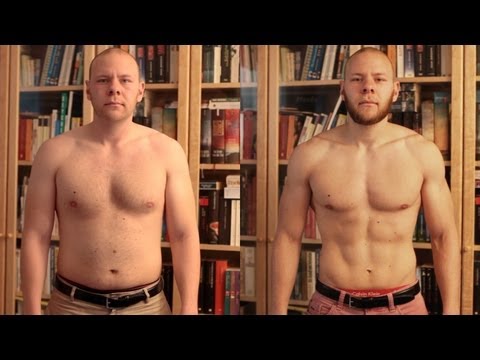"If I notice a no-no food, I find it sort of taking over my brain," says Heather, who, like many of the people here, has a history of multiple addictions ("I used to grab a pint of Ben and Jerry's on the way to my AA meeting," she says). Michael, pale, doughy, and earnest in his rayon pants and golf shirt, describes a recent fraught holiday meal where he brought his own food—and almost, but not quite, took a sip of wine. "Eating like this can be very isolating," he says with a sigh. Then he adds brightly: "But it's worth it."
But it's worth it: This is the refrain I hear again and again from the fellowship of Food Addicts in Recovery Anonymous, which manages to be both the simplest and most draconian of all weight loss programs. Indeed, if I just told you how to "work the program," this would be a very short article. Don't eat processed carbs or sugar. Ever again. Oh, and talk to your sponsor every day, and weigh everything. Buh-bye! Good luck!
The logic behind these stringent guidelines accepted by FAers, as they call themselves, is that food is like a drug, and to free yourself from its hold, you must treat it as such. Believing you are addicted to food means you essentially cede control to the higher power of human biology. And while the science is still in its very early stages, there is more and more evidence suggesting that certain foods are, in fact, physically habit-forming. Fresh off another holiday season, that's familiar to most of us, at least in bite-size ways: the craving, the grab, the vow to stop grabbing.
Sidestepping such ups and downs via an ultrastrict approach to diet has become relatively commonplace in this time of heightened food sensitivities, with people cutting out gluten and dairy and sugar right and left in order to control weight and manage chronic disease. (Proof, not like you needed it: As of 2015, Paleo dieters, who eschew all of the above, can avail themselves of everything from dedicated restaurants to an annual festival and a bimonthly magazine.) FA is a more extreme variation of the way many neo-Paleo types are living, or at least trying to live, already. On some level, we all know what it feels like to have an unhealthy rapport with food one way or another; the question is just how far you're willing to go to control your relationship with how you eat.
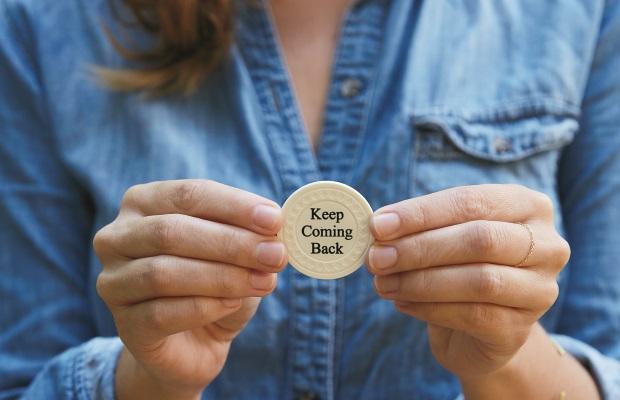 Photograph by Jason Varney
Photograph by Jason Varney
Twenty-six years ago, Dorene L. realized that her relationship with food was going to kill her. (Note: In the spirit of all 12-step programs, the people profiled here have chosen to remain anonymous.) The New Jersey real estate agent was 5'2" and 250 pounds; she had chronic heartburn and grossly swollen ankles. "I thought I was retaining water, but it turned out the ankle swelling was blood," she says. "At my weight, my heart couldn't pump my blood effectively."
FA is a more extreme variation of the way many neo-Paleo types are living already.
One day when Dorene and her husband were at the beach, she saw a heavy woman and asked, "Am I as big as that woman?" He replied, "Actually, you're bigger." This offhand comment was the beginning of therapy, which landed her in a rehabilitation center in Florida that specialized in food addiction. (It was also the beginning of the end of that husband, but that took a little longer.) There, Dorene came to see that her eating wasn't just an excessive attachment to pleasure or comfort; it was more like letting the tiger out of the cage three times a day. You can live entirely without booze. You can live entirely without cigarettes. Addictive eaters, though, have to face their nemesis all day long.
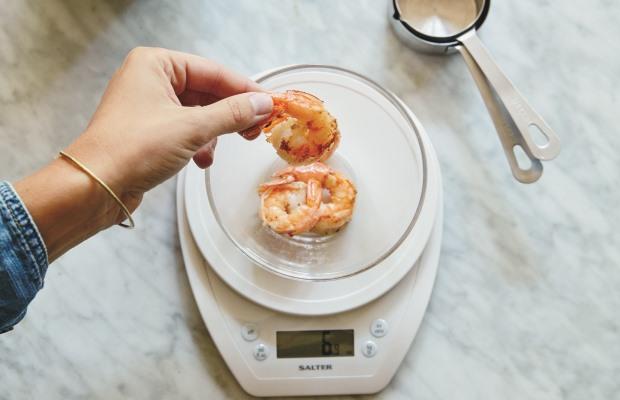 Photograph by Jason Varney
Photograph by Jason Varney
"A lot of people think when you find out what's bothering you, you'll be able to eat in moderation," Dorene says. Some members of Overeaters Anonymous, for instance, talk about "numbing themselves" from traumatic events with food. FAers generally disagree. "I believe I was an addict from the moment the sperm hit the egg," Dorene says. "It's not about what your mother said or didn't say. It's what you're eating. The problem is either biochemical or psychological. It can't be both."
Cutting sugar and processed carbs from your diet, as Dorene ultimately did, diminishes the biochemical forces that send almost all of us, like zombies, back to the kitchen for just one more taste of leftover pasta carbonara, just one last salt and vinegar chip. One 2013 brain imaging study at Boston Children's Hospital, published in the American Journal of Clinical Nutrition, showed that high-glycemic foods (highly processed or rapidly digested carbs like white bread and potatoes) stimulate the same pleasure centers of the brain associated with reward and cravings—in other words, the same areas of the brain involved in substance abuse. "The hallmarks of addiction are there—certainly the tolerance and craving," notes David Katz, MD, a preventive medicine specialist at the Yale University School of Medicine. "With sugar and salt, you build up tolerance; the more you get, the more you want," he says. "And the craving: You need it, you eat it, you feel better, then you crash—and then you want that substance again." Almost everyone hears the siren song of certain foods, whether it's devil's food cake or devils on horseback, but that doesn't mean we're all addicts any more than everyone who loves good wine is an alcoholic. (Here are 3 tips for crushing those cravings.)
Serge H. Ahmed, PhD, a French addiction researcher, has shown that refined sugar can be as addictive as cocaine, maybe more so, for 6 to 10% of people. Why some people become addicted to one pleasure and can easily abstain from others is a bit of a mystery. (As the comedian Russell Brand said in his autobiography, "Even as a junkie I stayed true to vegetarianism. I shall have heroin, but I shan't have a hamburger.") But FAers leave such technical questions far behind.
Weight Watchers members number over a million. Overeaters anonymous claims about 60,000. And FA? It has a tiny but deeply committed 4,000 followers.
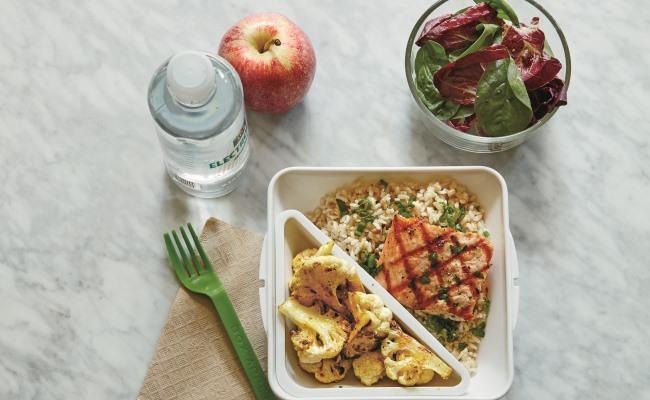 Photograph by Jason Varney
Photograph by Jason Varney
Without cake or chips or pasta or bread in your life, you'd have to eat whole cows and a Harry Belafonte-ish boatload of bananas not to lose weight (hence the aforementioned popularity of going Paleo). Accordingly, members of FA eat a ton of food. "You actually eat a larger quantity than you're used to," explains Timothy K., a San Franciscan who's been attending FA meetings for 6 years. Timothy is typical of a surprisingly large proportion of FA members in that he wasn't hugely overweight to begin with; he was a runner who couldn't lose that last 25 pounds, but who hated the feeling of being out of control around food, as he had once been around liquor. "For lunch I have a few ounces of protein, a serving of grains like brown rice, a vegetable, and salad," he says. That is almost definitely more lunch than you ate today. "I measure every single thing I eat in ounces on a digital food scale," Timothy goes on, "and I use tablespoons of oil and vinegar on the salad. It appeals to my sense of precision."
Precision, maybe, but there is an undeniable sense of fear at play here, too. Through this wholesome approach to food runs the signature paranoid thread that characterizes all addiction programs, the element of rigidity that's vital for keeping addicts from slipping from generous, healthful eating into gorging.
There are no choices in FA; everything about eating is codified. You are not to skip meals; getting ravenous makes eating an even greater pleasure—and is how you end up inhaling the bread basket. You are to plan ahead; as FA members are fond of repeating, "If you fail to plan, then you have planned to fail." This means knowing exactly what you're going to eat on any given day, and eating at around the same times every day. Three meals, in the same proportions, no snacking, basta. There is no such thing as eating a bit and just learning to push away from the table—because if the table had a little powdered sugar on it, you'd eat the table, too. Finally, if you slip—if you, say, eat a few bites of sweetened yogurt—you are sent down the chutes so you can reclimb the program's ladders, starting from day 1 all over again.
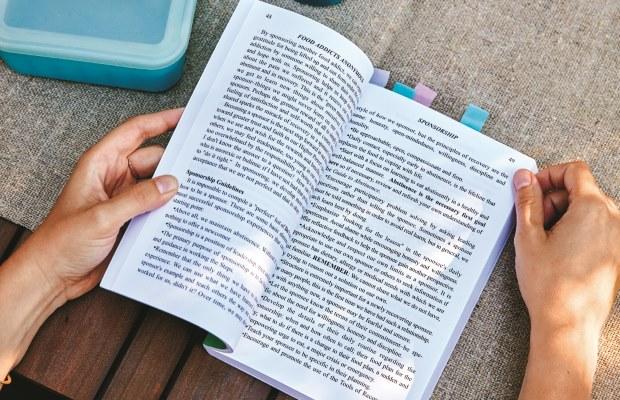 Photograph by Jason Varney
Photograph by Jason Varney
Eating in public is its own special challenge. "Going to a restaurant can be really scary for a food addict," says Lisa R., 32, who's lost 70 pounds. "And it's not just restaurants; food is everywhere. You encounter it where you least expect it." She knows because she is a sponsor, a mantle all FA members can take on once they've been abstinent for 6 months, and sees people at their rawest. She has accepted panicked calls from parties; she has guided people through the aisles of supermarkets, telling them what to buy and what to put back on the shelves. Recently, one of her sponsees had a confrontation with a vending machine. "He said, 'How do I not put quarters in? '" Lisa recounts. "I told him, 'Don't worry, we'll talk to the Doritos together.'"
This kind of support, any FA member will tell you, is just as vital as swearing off chips and carbonara. You talk to four people in the program every day—your sponsor and three other members. "It can be 2 minutes, it can be a half hour," Timothy says, "but it keeps me connected to these people, who are growing and changing like I am." Conversations are not only about food. They're about life. "It's like, 'How's your program going? Anything you want to get to the surface?' And people will be like, 'I have a job thing going on. I have a medical issue.' " These conversations are basically like those we all have with our friends and family—who hasn't relied on siblings or adult children or just Facebook (or spouses) to keep us honest during a weight loss attempt?—but with a calm, abstinent crowd that is working the steps. "Working the steps" can mean many things—for instance, accepting that only "a Power greater than ourselves could restore us to sanity" (Step Two). But the common denominator is understanding the disease of addiction.
There is a vital factor here that can't be quantified: the sense that you are not alone.
In the first year after determining that she was a food addict, Dorene, the New Jersey real estate agent, struggled. "I was used to doing everything for everybody," she says, "but when I got out of food rehab, I just had to concentrate on myself." After attending various 12-step program meetings, she eventually settled on Food Addicts Anonymous, or FAA—a group that's separate from FA, but that also encourages members to accept that they're addicts and banish refined carbs and sugar. She followed the FAA guidelines assiduously; she even brought her own salt with her to restaurants, because iodized salt contains dextrose, also known as sugar. Dorene currently attends three meetings a week. "I remember soon after coming home from rehab, I was eating dinner and my son said to me, 'You know, since you started this thing, you've become really selfish,' " she recalls. "My daughters, too, said they didn't like how I was acting. It was a knife in my heart. I just cried and cried. The thing was, I knew I had obsessive tendencies, and I needed to obsess about this." For the first time in her life, she realized, her family was not her only consideration.
Answers from an FA Sponsor
 Photograph by Jason Varney
Photograph by Jason Varney
How do I deal with the holidays?
BYO food so you don't accidentally eat something forbidden.
I'm getting married. Am I not supposed to have a bite of my own cake?
Nope. You can fake it for the pictures, though.
If I go to a restaurant, I can't bring my own food. What do I do? Do I tell the chef how to cook for me?
Call ahead and find out. Some places are more accommodating than others.
Over time, Dorene developed a small new set of friends she'd met in the meetings. She found rituals that did not involve food, like dance classes, where she eventually met her second husband. And as she slimmed down to a size 8 and stayed there, her relationship with her children also stabilized. Eventually they joined her in cutting back, if not eliminating, sugar and flour. Within the first year of eating like this, the differences in Dorene's health and energy were profound. She believes she wouldn't be alive today if she hadn't embarked on a 12-step program. "It was a completely transformative experience," she says. "I just celebrated 26 years of abstinence in September," she says. "I am 72 years old, and I feel like I'm 16."
The FA handbook notes 160 ingredient-list words that herald the presence of sugar.
For most of us, living such a food-restricted life is impossible, almost laughable; many of us would vow a life of celibacy before a life devoid of pie, and there is a monk-like strain among adherents that the average person might find off-putting. But there is a factor in FA, and indeed all 12-step programs, that simply can't be quantified: the overwhelming sense that you are not alone. We think of eating as the most gregarious of activities, but for people for whom food has brought problems and shame, food also brings loneliness. That FA addresses the loneliness is integral to the cure. It's that sense of community, the daily clutch of humans joining together to fret and laugh and plan their way through the daily struggle, that really sets them free. (Take back control of your eating—and lose weight in the process—with our 21-Day Challenge!)
Last January, the FDA approved a new drug, Vyvanse, a central nervous system stimulant, to treat binge eating. Another treatment on the market, an opioid inhibitor called naltrexone, used to treat alcoholism, is being studied for overeating. But members of FA like Timothy declare there will be no pharmaceutical help for them. Many are purists. They might look insane to the outside world, with their BYO salt shakers and food scales, but in some ways, they're saner than most people, Timothy says: Their relationship with food and their connectedness with each other are far healthier. Eating things our great-grandmothers would recognize, as Michael Pollan puts it, and connecting every day with people by phone or even face-to-face is a throwback to a time when a fast-food dinner inhaled in your car was unheard of. "Spend some time with a bunch of people in the fellowship," Timothy muses. "There's something about taking flour and sugar and caffeine out of a bunch of humans that makes you go, 'Oh, this is what the human race used to be like.' "
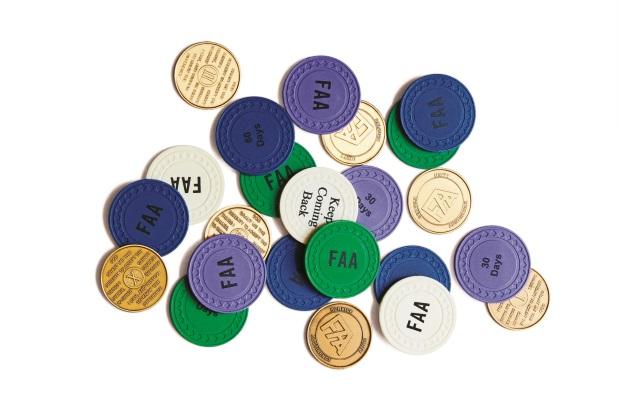 Photograph by Jason Varney
Photograph by Jason Varney